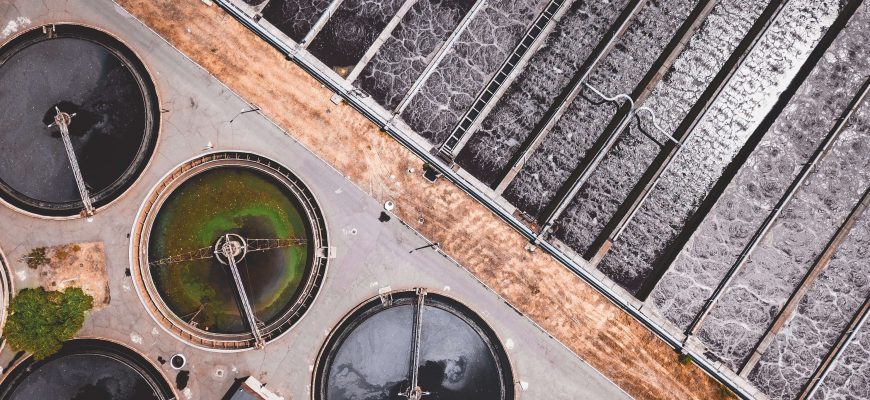
By Stan Meiburg – Director, Graduate Studies in Sustainability at Wake Forest University and Academy Fellow
The Infrastructure Investment and Jobs Act (IIJA), otherwise referred to as the Bipartisan Infrastructure Law (BIL), promises historic levels of investment in many areas of U.S. infrastructure. This characterization is certainly true for drinking water and wastewater: the $48.4 billion in the BIL represents the largest federal allocation ever made for these purposes. As large as it is, however, will it be enough? More importantly, does it encourage sustainability?
The American Society of Civil Engineers grades the nation’s overall infrastructure at a C. Our water infrastructure fares even worse; U.S. drinking water, stormwater, and wastewater systems received grades of C-, D, and D+ respectively. Sustainability requires us to invest in the ongoing operation and maintenance of these systems, not only in the construction.
To be sure, the nation needs the IIJA funds to make up for years of underinvestment, especially in underserved communities. The Act puts communities with the greatest needs at the head of the line by targeting specific concerns: disadvantaged communities, lead drinking water service lines, and emerging contaminants such as per- and polyfluoroalkyl substances (PFAS). The Act properly targets areas that have not been able to access funds for improvements by more conventional financing means and focuses on problems that have emerged in recent years.
Is it enough? On the one hand, according to the Congressional Research Service (CRS), the Environmental Protection Agency (EPA) estimates, “the capital cost of wastewater and drinking water infrastructure needed to meet federal water quality and safety requirements and public health objectives exceeds $744 billion over a 20-year period.” On the other hand, neither Congress, states, nor local governments ever expected federal investment alone to meet this need. Especially during recent years of low interest rates, communities across the country with good credit ratings have been raising funds through municipal bonds to invest in necessary infrastructure improvements. The magnitude of these investments nationwide has exceeded the annual federal contributions to State Revolving Loan funds, as valuable as these have been. In 2018, the Congressional Budget Office estimated that only about 4% of spending on water utilities came from the federal government; 96% came from state and local sources.
That said, there are three considerations for the future sustainability of water infrastructure.
Sustainable Finance: Most IIJA funding goes into existing State Revolving Funds (SRF) that have been active and successful for decades. The additions from the IIJA give the EPA and states more options to use State Revolving Loan funds creatively. However, the need remains for localities to fully utilize the existing SRF funds with financial sustainability in mind. A report by the U.S. EPA’s Environmental Financial Advisory Board[1] in 2008 highlighted the benefits of using SRF funds to leverage additional financing. States should apply this approach more widely across the country.
Sustainable Design: It does no good, especially for a smaller community, to receive a capital grant for a wastewater treatment system that is more complicated than it needs. Communities, states, and the EPA need to support design decisions that will not create shiny new facilities with high operation and maintenance (O&M) costs that communities cannot sustain in the out years. Designs should also consider how the climate is changing. Especially for wastewater treatment facilities sited downstream, designs should incorporate resilience to anticipate extreme weather events beyond what we now think of as normal.
Sustainable Operation: However, engineering design is not the only relevant concern. Efficient, good governance is critical for setting and collecting user fees, ensuring proper routine maintenance, providing for replacement of capital equipment at the end of its useful life, and overseeing overall system operations. A historical barrier to achieving this governance has been the desire by individual communities to operate their own systems when consolidated systems would enable sharing of fixed costs and improve operational efficiencies.
Beyond governance, full-cost pricing of system operations is essential for sustainable operations. Neither federal nor state governments support ongoing O&M costs for drinking water, wastewater, or stormwater; the systems’ users must bear them. As noted above, communities should consider this in system design. However, full-cost pricing may need to take innovative forms in different communities to account for equity and affordability concerns. Affordability is a household issue as much as it is a community issue; uniform rate structures carry disproportionate burdens on lower-income households. There is no “one size fits all” solution to this issue, but each community should address it head-on.
Unfortunately, the IIJA is relatively quiet on sustainability. The willingness of communities to incorporate these sustainability principles will determine the long-term effectiveness of the IIJA in addressing issues such as lead replacements, PFAS treatments, and wastewater improvements. America must invest in resilient, sustainable infrastructure to create and maintain modern water systems. The IIJA is a generational opportunity to support this goal. Still, as in so many aspects of our everyday life, success will require intergovernmental collaboration in communities of all levels, circumstances, perspectives, and sizes to identify problems, find solutions, and design improvements for today’s challenges.
Want to learn more about our water systems and sustainability? Check out Stan’s conversation on the Management Matters Podcast.
[1] View the Environmental Financial Advisory Board (EFAB) Advisory Reports database
